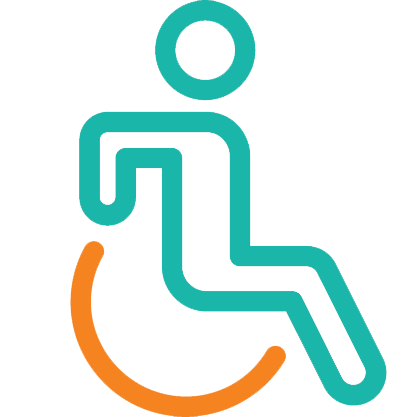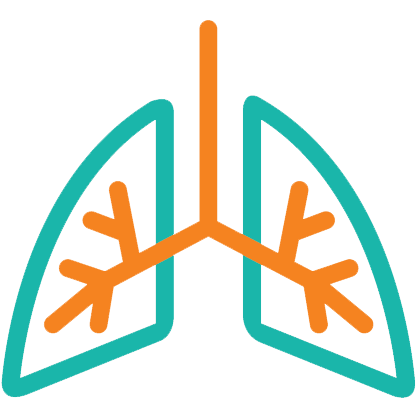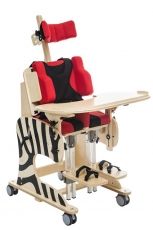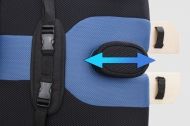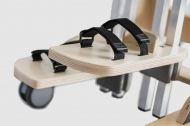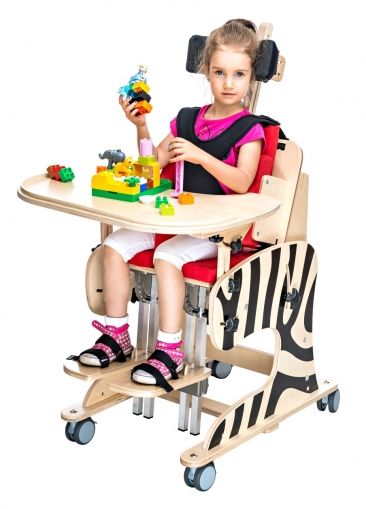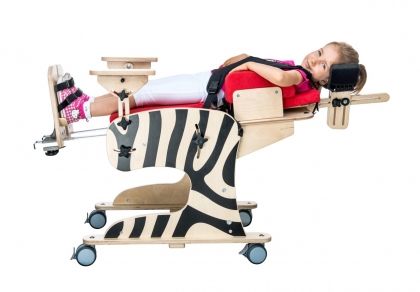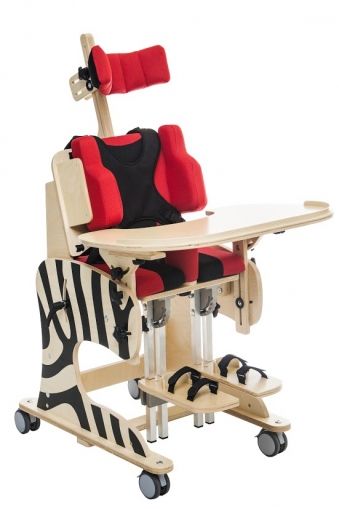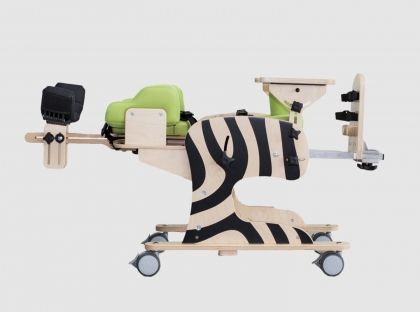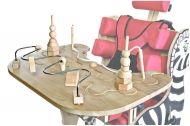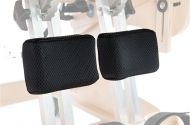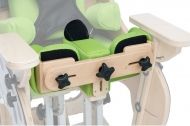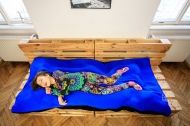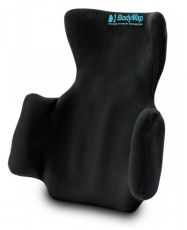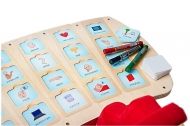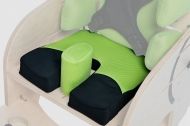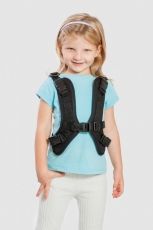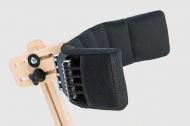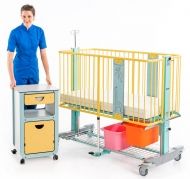-
User's height150 cm
-
Max user weight60 kg
-
Weight14 - 34 kg
-
Warranty2 y
Rehabilitation chair ZEBRA™ is designed for children and young people who have significant locomotor deficits.
Moreover, it is beneficial for youths who did not learn how to sit or have difficulties with adopting the sitting position. It is useful for flaccid children with decreased muscle tone as well as for children with significant spasticity. Furthermore, this chair may be handy concerning orthopaedic disorders and, moreover, it may be used for children who need reliefe for lower limbs after surgery. This chair exerts a positive influence on the child and his family. It is made of ecologic and safe materials and it is hand painted. Moreover, safety vest and pelvic belt are equipped with innovative “HOLD & PULL”© system which allows for quick and precise stabilization of the child in the device.
It is useful for flaccid children with decreased muscle tone as well as for children with significant spasticity. Furthermore, this chair may be handy concerning orthopaedic disorders and lower limbs relief needed after surgery. This chair exerts a positive influence on the child and his family.
It is made of ecologic and safe materials and it is hand painted.
System of supports and belts makes the children feel secure and confident. The young patient is able to take meals, play, or perform therapy exercises in the sitting position. Moreover, safety vest and pelvic belt are equipped with innovative “HOLD & PULL”© system which allows for quick and precise stabilization of the child in the device.
Thanks to the rich equipment and vast array of adjustments, ZEBRA™ can meet the needs of every patient.
Special features
- The device ensures adequate stability and safety of Patient.
- We use only human and environment friendly materials.
- It is possible to change the tilt angle of the seat.
- Footrests with 3D adjustment allow for smooth foot setting in all directions.
- We offer 24 months warranty on the product. We also provide after sales service.
- Intuitive way of adjustment and easy assembly.
- The product has 2 utility functions for use in 1 single device.
- The device is equipped with breathable, hypoallergenic 3D spacer fabric. Now you can be sure that the skin stays dry for longer!
- Our harnesses and pelvic belts are equipped with Hold and pull system that provides fast and comfortable support your child in the device.
- The chair can be easily converted into a couch.
- Adjustable abduction block helps to keep properly seated.
- Independently adjustable footers.

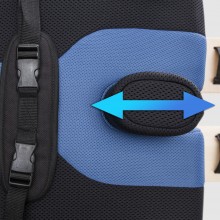
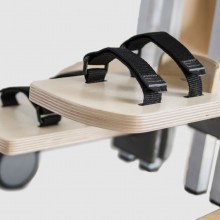
Indications
- Cerebral palsy – various types and forms.
- Brain and spinal cord injuries with lower limbs paralysis and weakness, balance and motor coordination disorders with different etiology.
- Demyelinating disease (e.g. multiple sclerosis – SM).
- Meningocele.
- Muscles diseases with weakness and paralysis (dystrophy, myasthenia gravis, myositis).
- Genetic disorders.
- Degeneration and neurological diseases.
- Other condition connected with muscles weakness, paralysis and musculoskeletal disorders.
- After head and spinal cord injuries and spine trauma with paralysis and paresis.
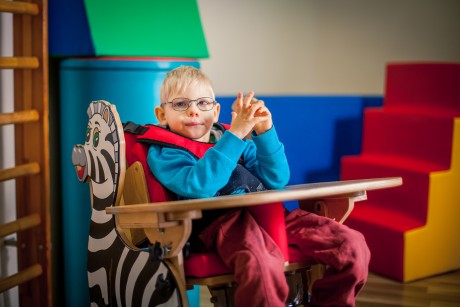
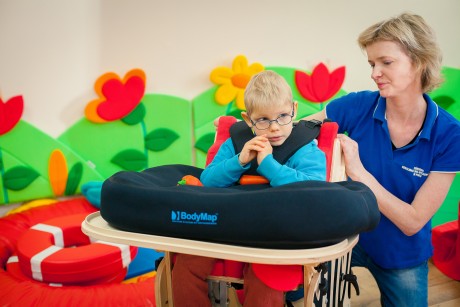
Standard equipment
Adjustable headrest
- Adjustment of headrest’s height
- Adjustment of headrest’s tilt angle
Cushion for backrest
- Foam edged with soft upholstery
- The possibility of removing cushion from seat
Chest pelottes
- Profiled pelottes edged with soft upholstery
- The possibility of adjustment for both height and tilt angle of pelottes
- Independent adjustment for each pelotte
Vest
- Trunk support function
- Made of easy to wash fabric
- Easy and quick adjustment of the vest to patient’s body with the aid of holders
- Wide range of adjustment
- Solid elements, certified with military certificate, manufactured by Nexus company
Tray
- Big wooden top with rim
- Adjustment of tray’s height and depth
- Adjustment of tray’s tilt angle
Pelvic belt
- Support trunk function
- Made of easy to wash fabric
- Wide range of adjustment
- Easy and quick adjustment of the belt to patient’s body with holders
- Solid elements, certified with military certificate, manufactured by Nexus company
Abduction block
- Profiled abduction block edged with soft upholstery
- Separating legs function and harness securing the patient from falling out of the stroller
- Easy dismantle of abduction block
Cushion for seat
- Foam edged with soft upholstery
- The possibility of removing cushion from seat
Upper limb support
- Adjustment of upper limb support’s height as well as tilt angle
- Independent adjustment for each upper limb support
Footrest with footers and feet stabilizing belts
- Adjustment of footer’s height
- Adjustment of footrest’s tilt angle
- Independent adjustment for each footrest
- Footers equipped with feet stabilizing belts
Frame with castors
- Frame with sides in modern version
- Castors equipped with brakes
- Scale indicating seat’s tilt angle (tilt-in-space function)
Seat
- Adjustment of seat’s depth
- Tilt-in-space function
Backrest
- Adjustment of backrest’s tilt angle
How to measure:

Dimensions:

Product dimensions:

Size help form to help us choose the appropriate medical device for your child
Please complete as much information as possible. Once the form is submitted, it will be sent to one of our on-staff therapists for review. Our on-staff therapist will be in touch with you within 1 business day of submitting to discuss the correct product and sizing for your child.


